As supermarkets have slashed costs, they’ve removed much of the in-store theatre. Can they bring the magic back?
The modern supermarket is a marvel of efficiency and cost-control. The butchers, the (in-house) bakers, the cheese, deli, fish counters – even the checkout tills to all intents and purposes – have been ripped out to save money and maximise profit. And along the way something has been lost.
“As retailers have looked at cutting costs, they’ve removed any ‘peripheral’ costs and looked at getting customers in and out as quickly as possible,” says The Retail Mind’s Ged Futter. “Shoppers have no loyalty to any retailer any more. It’s become boring because they’re all doing the same thing in store – nothing.”
The latest figures from Kantar Worldpanel Plus back that up. It found the net difference between shoppers who would recommend their shopping experience in UK supermarkets versus those who wouldn’t has been falling in recent years. Net recommendation now stands at 5% of shoppers, a significant decline in customer satisfaction versus the 12.2% figure in 2022 and the 16.9% achieved in 2021.
It’s not just the loss of counters. The cessation of in-store sampling, removal of greeters, functional displays, even instructing cashiers to no longer ask customers if they want cash back because it saves a few seconds, are all indicative of a utilitarian approach to the shopping experience.
“Supermarkets have gone to the extreme of Bauhaus’ ‘form follows function’ ideal: prioritising order and process at the expense of entertainment and simple pleasures,” says Stephen Haggarty, executive creative partner at Yonder Consulting, which counts Costa Coffee, Just Eat and M&S among its clients.
This stripped-back approach is an understandable response to the cost of living crisis, driven of course by the discounters and enabling more competitive prices. But as well as removing their points of difference, it means that, increasingly, they are competing on price alone, while limiting the opportunity for discretionary purchases, says Bryan Roberts, global insight leader at IGD. “A more engaging in-store experience usually results in higher average baskets and creates an environment more conducive to upsell and impulse.”
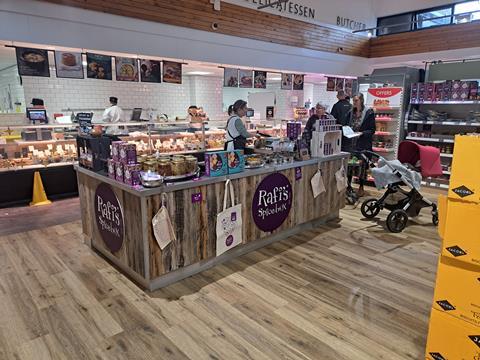
Crucially, it’s also something customers want. According to the NIQ Homescan Survey 2023, “a good overall shopping experience” ranks second on the factors driving consumer store choice. Mike Watkins, NIQ’s head of retailer and business insight, notes that it normally ranks first, but believes the focus on prices and promotions due to the cost of living crisis has been so all-consuming that it’s detrimental.
“We all bang on about ranges and private label and promotions,” he says, “when actually, shoppers want a nice shopping experience above and beyond. When they go in, they’ve chosen where to go, but if they’re disappointed with the store they ain’t coming back.”
So which supermarkets are doing customer experience well? How do they make their stores engaging? Are there lessons to be learned from other retail categories? And what are the barriers to a successful customer experience at scale?
M&S is the trailblazer
M&S has put customer experience at the heart of its turnaround. Since 2019 it’s undertaken a wide-ranging store renewals programme, and it’s paying dividends, with the M&S share price almost doubling in the past year.
The facelifts started slowly, with the formula tweaked and fine-tuned in each early store conversion. But the aim in all cases, as M&S puts it, is to combine the mind of a supermarket in terms of efficiency, with the freshness and fun of a fresh market. Having proven it works, not only are store conversions delivering incremental sales, M&S recently accelerated the store opening programme. Overall, 92 stores currently feature the new foodhall format and over 100 further foodhalls are planned by 2028.
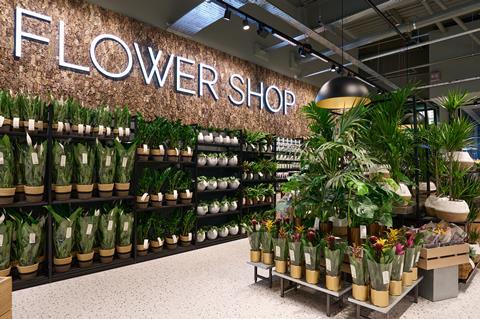
The creative agency tasked with creating the look and feel of the M&S store renewals is Whippet London. Sean Dwyer, Whippet’s principal and creative director, says: “It’s not just about giving stores a surface-level facelift and adding a bit of sparkle. This is about re-examining and refining everything from start to finish. The environment sets the product up to be instantly desirable and, ultimately, more sellable. Bigger, bolder perimeter messaging speaking to locality and quality, as well as striking graphics, ground the customer in the experience and brand story.
“And then there are the extra moments of magic: the striking neon signs; the disco ball pizza oven; the lovable Percy Pig button that oinks… The whole environment has been carefully designed to pull you in.”
M&S operations director Sacha Berendji is convinced others could learn from its success. “Physical retail needs to become much more experiential, and stores need to give customers an environment they really want to spend time in.”
Another retailer that’s focused on in-store experience is Booths. The upmarket northern supermarket has struggled financially in the cost of living crisis. But, famously throwing out its self-checkout machines, it’s staking a turnaround on investment in better customer service, aided by a store refurbishment programme. It recently reopened its Clitheroe store after an extensive refit. Deli counters have been extended, hot food to go has been added and a concession partnership with the ingredients store Rafi’s Spicebox has been expanded. Customers can ask the Rafi’s employee for spice recommendations or recipe ideas, which are then paired with Booths products. Booths MD Nigel Murray envisages that all its stores will eventually follow a similar mould.
Investment in stores is part of Booths’s “value equation”, he says. “We try to engage all five senses. There’s only one way to do that. We try and get people in and engaged with the food and the purpose.
“We’ll never be as cheap as the cheapest, it just doesn’t work that way when you’ve only got scale of 27 stores. So, what we’ve got to do within that price is make sure there’s a huge amount of additional value through quality, service and experience.”
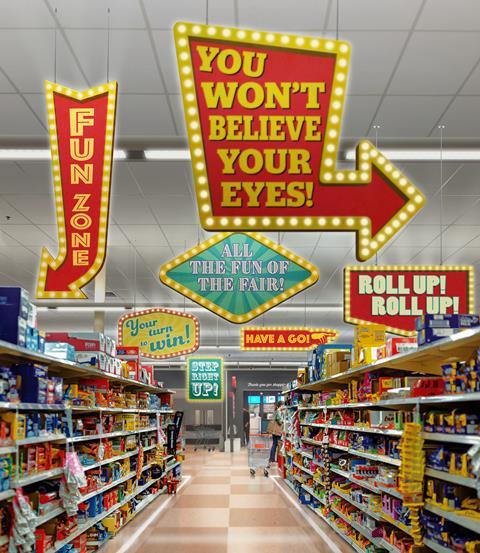
International inspiration
In the search for inspiration, however, supermarkets also need to look further afield. John Ryan, MD of retail website Newstores, suggests UK supermarkets look to France and Germany for examples of where supermarkets are competing against the discounters through in-store experience. “When you go to a fish counter at some of the supermarkets in France, it’s mind-boggling,” he says. “You slow down and take more time.”
In North America, Wegmans in the US and Loblaws in Canada are other retailers elevating the in-store experience far beyond the transactional.
But “the apex of fun grocery shopping is Stew Leonard’s in the US,” Roberts believes. “There’s a lot that retailers can learn here.”
In all seven Stew Leonard’s stores, customers will encounter numerous all-singing, all-dancing, animatronic displays. These run the gamut from ‘The Avocado Girls’, with their dazzling eyelashes, who belt out a tune extolling the health benefits of avocados, to ‘The Farm Fresh Five’, a band of singing milk cartons replete with drums, a banjo and more, who perform their own ditty welcoming shoppers to the stores.
Read more:
-
Co-op relaunches largest store in multimillion-pound makeover
-
Booths ripping out self-service tills is counter-cultural but comes at a cost
-
Tout’s: the forecourt retailer with the ‘heart of an independent’
But what of the bottom line? “It is absolutely not a financial decision,” says Chase Leonard, a third-generation member of the owning family and Stew Leonard’s senior photo and video producer. “Having that fun family atmosphere here is one of our pillars, so it’s not something where we’re looking for a return on the investment at all. It’s simply that we genuinely care about the customer experience.”
Leonard also cites the stores’ “atypical” one-way aisle system (think Ikea) as something that “allows you to immerse yourself in each department in a more interactive way”, as well as the fact they give out “lots” of samples, “so you can basically eat your way through the store, and that’s just fun in and of itself”.
Asian supermarkets also provide inspiration. “Most have stunning floor displays of fresh produce that customers can touch, taste and try before they buy,” notes Haggarty. For example Park N Shop, a supermarket chain in Hong Kong, puts its ‘fresh food market’ – inspired by traditional wet markets – at the centre of its stores, while Freshippo in China leverages the massive amount of data it has as part of the Alibaba group to understand customers deeply and offer personalised recommendations via an in-store app, such as being directed to bottles of wine that pair with the fish you’ve just scanned and put in your basket.
“‘Power Aisles’ are also hugely popular,” Haggarty says, and used as “‘experience highways’ to navigate shoppers through the store. From popcorn stations to honey bars, it’s bringing a theme park-style environment to the supermarket, which people love.”

In-store inspiration from overseas
Wegmans
Wegmans frequently tops polls as the US’s favourite grocery retailer. One of the pillars of its success is the offer of a full-service restaurant in each store, making it easier for shoppers to fit grocery shopping into their daily or weekly schedule. In addition, many of the dishes on offer are created using the Wegmans range, with the recipes available on the website or app. Stores have also been designed to resemble European open-air markets, but with extra-wide aisles and even the ability to chart a course through the store using the app or online after creating a shopping list.
Freshippo
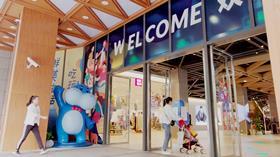
Owned by Chinese e-commerce giant Alibaba, Freshippo prides itself on catering to contemporary lifestyles by fully embracing in-store, click and collect, and delivery. The Freshippo app elevates the shopping experience greatly – scan an item and the app provides recommendations on suitable food and drink pairings and then directs customers to the suggested item in-store, sends it to the till already packed or even sends it directly to the shopper’s home. The brand is also experimenting with its Freshippo Premier format, “a 6,000 sq ft store in Shanghai that resembles much more of a premium showroom than any supermarket you’d see here in the UK”, says Stephen Haggarty of Yonder Consulting.
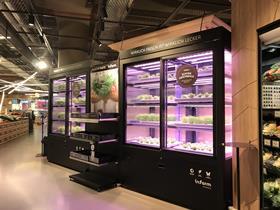
Edeka
At Edeka in Germany, even the floor tiles are working to tempt shoppers. In some stores, they advertise the availability of fresh food to go such as kebabs – and direct customers towards their whereabouts at the deli counter. Elsewhere, modern, industrial design is juxtaposed with brightly coloured fresh produce in award-winning design, transforming stores into “temples of gastronomy that elevate food and drink far beyond the transactional”, says Bryan Roberts of IGD.
Stew Leonard’s
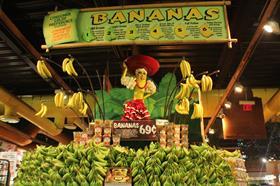
Stew Leonard’s operates seven stores in the US and takes inspiration from Disney. Singing animatronic characters, mooing cows and train sets placed overhead all play into the family-friendly ethos. “When you go shopping, you want your kids to enjoy it too,” says Chase Leonard, a third-generation member of the Leonard family.
Thinking outside the supermarket box
In terms of that in-person experience, supermarkets might also take inspiration from retailers in other categories. Fashion brands frequently leverage pop-ups to create experiences to attract consumers to store and generate “hype”, notes Tom Edington, CEO of The Yard Creative, which has worked with brands including Nike, Converse and Bread Ahead.
“Take a Hermès pop-up in Santa Monica. They transformed their store to create a cinematic performance featuring their birkin bags as singing puppets. Their immediate KPIs for this would have been awareness and engagement metrics – not sales, which is an important mindset shift grocery needs to adopt,” he says.
High-end cosmetics brand Aesop is another that places great significance on the in-store experience. The uniform design of its packaging sits alongside the smooth surroundings of the store to “stimulate curiosity”, according to Ryan, “because you’re so used to seeing a million different sorts of packaging”.
“The other thing, of course, is that every Aesop is different,” he says. “They tend to use a different architect for every branch. Yeah, you pay for it when you get to the till – it’s not cheap buying face cream there. On the other hand, you don’t mind because you’ve tried a million soaps, you’ve enjoyed the architecture, you’ve enjoyed the experience.”
And while the low margins in food retail make these ideas unrealistic at scale, at the other end of the pricing spectrum, Ryan thinks “it’s bloody clever what Primark has done. They’ve gone from being the place you went to buy stuff with an eye on your wallet to a place you’ll go into as a matter of course. And when you look at the fit outs, they’re quite good at snapping up beautiful old properties. They’ve been spectacular in the way they’ve managed to be budget but not feel budget.”
Another area where supermarkets could upgrade and reap the benefits of customer enjoyment is training, according to Haggarty: “If retailers could upskill the shelf stackers and till workers and get them engaged in the customer experience, that can really start to open up new avenues and rebuild the fun and enjoyment that seems to have been lost.”
It’s an area Booths is committed to – 18 months ago, it launched a meat and fish training academy, to lift its “craft and service capabilities”, says Murray.
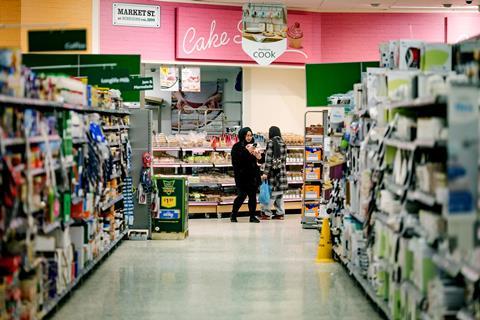
So, too, is Morrisons. It has over 6,500 trained butchers, fishmongers, bakers, cheesemongers and florists who give expert advice daily to customers through its Market Street areas. The big question for new CEO Remi Baitieh is whether such store theatre is worth it.
“There’s a question mark there. And obviously a lot of retailers decided the cost-benefit analysis doesn’t stack up,” says Roberts. “However, there are other factors to consider for shoppers, like fun, engagement and inspiration. These don’t immediately register on a spreadsheet, but they do create commercial value over time.”
Implementing store concepts at scale
If Morrisons does decide to update its Market Street offer, one obvious challenge is rollout. The grocery sector is littered with impressive concept stores and flagships that offer innovative approaches to the weekly shop, and Morrisons is no exception, including new stores in Canning Town, Preston and Brentford and the refurbishment of its Manchester Piccadilly store.
But transferring that innovation from a handful of locations to hundreds of stores is another matter entirely. Plus, says Ryan, “if you get it wrong and you roll it out, then you’ve rolled out something people don’t like. Therein lies a fairly major problem. Just ask Debenhams.”
The main barrier to bringing back the magic, though, is undoubtedly cost. The oft-mentioned fish counters, for example, are notorious for not making money while occupying plenty of space. “Doing anything different will add cost in, and all the retailers are looking at taking cost out,” says Futter.
However, it’s clear that “investment in stores is required,” says NIQ’s Watkins. “And I don’t mean capex on new stores – I mean remodelling, reimagining stores to make them fit for purpose. A lot of our food stores in the UK are legacy, large supermarkets, planned 30 years ago, opened 20 years ago, and for the last decade probably haven’t had much money spent on them.”
But the bottom line cannot be the only consideration, says Booths boss Murray: “We’re not bothered about being big. I’ll go as far as saying we couldn’t care less. What we aspire to be is the best. We’ve got to be really careful about finding the balance between how busy we are and what that experience is. I remember in our Ilkley store when we launched our Christmas book, thinking: ‘This is too much.’ It was too fraught, too noisy, too busy.
“In one sense the accountants’ ears might have been ringing, but in terms of the experience – that’s what we’ve got to manage. We’ve got to find a way to make that experience a really enjoyable one. Make every inch of floor space work.”







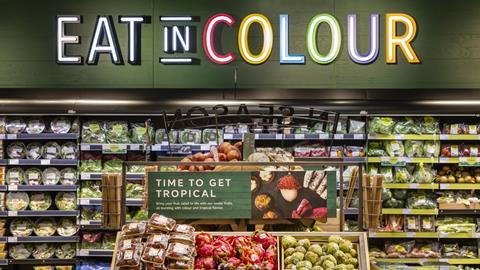
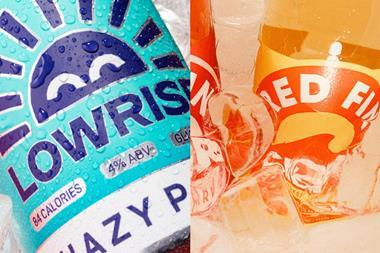
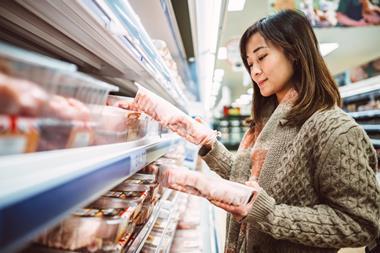
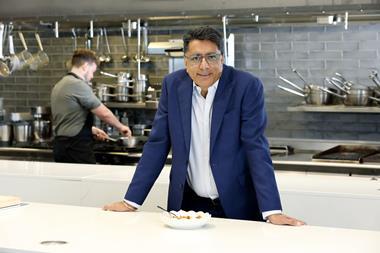


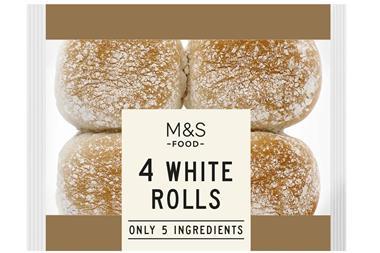






No comments yet